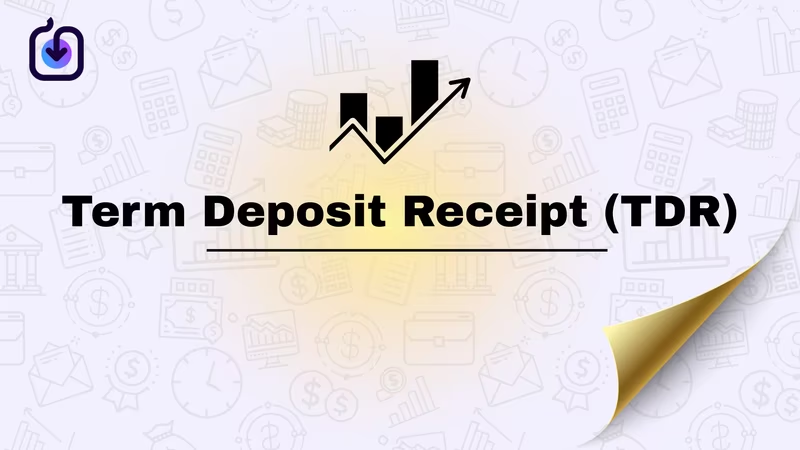The TDR meaning refers to a financial instrument issued by banks to depositors who invest a fixed sum of money for a specific period at a predetermined interest rate.
It acts as proof of the deposit and mentions key details like deposit amount, tenure and maturity value.
TDR Full Form in Banking
The TDR full form in banking is Term Deposit Receipt. It represents a secure investment option where funds are locked in for a fixed time.
The depositor cannot withdraw the amount before maturity without incurring a penalty. Banks issue a receipt as evidence of this term deposit.
Types of TDR
There are different types of TDR based on the period and payout options. Some common ones include:
- Short-term TDR: Tenure ranges from 7 days to less than a year.
- Long-term TDR: Tenure extends beyond a year.
- Cumulative TDR: Interest is compounded and paid at maturity.
- Non-cumulative TDR: Interest is paid at regular intervals, such as monthly or quarterly.
Key Components of Term Deposit Receipt (TDR)
It is essential to understand the key components of a Term Deposit Receipt, as each element provides important information about your investment.
Here are the main details typically included in a TDR:
- Account Holder Details: Name and account information
- Bank Details: Bank and branch name
- Deposit Amount: Principal invested
- Duration & Maturity: Tenure and payout date
- Nominee: Person entitled in case of depositor’s death
- Deposit Type: Fixed or recurring
- Renewal Terms: Auto-renewal options, if applicable
These components together ensure transparency, which makes term deposit a safe and reliable investment option.










